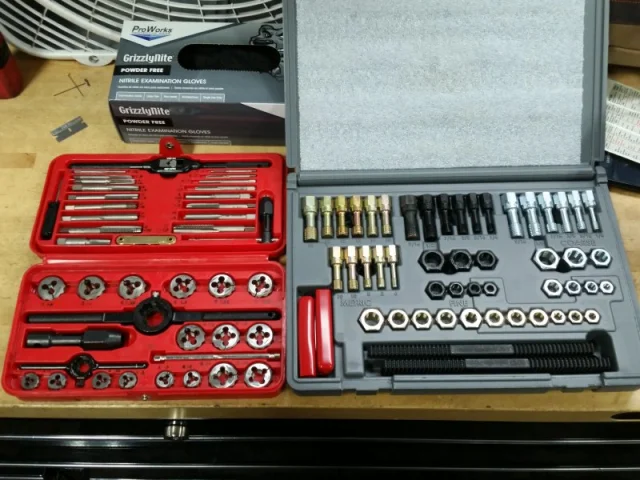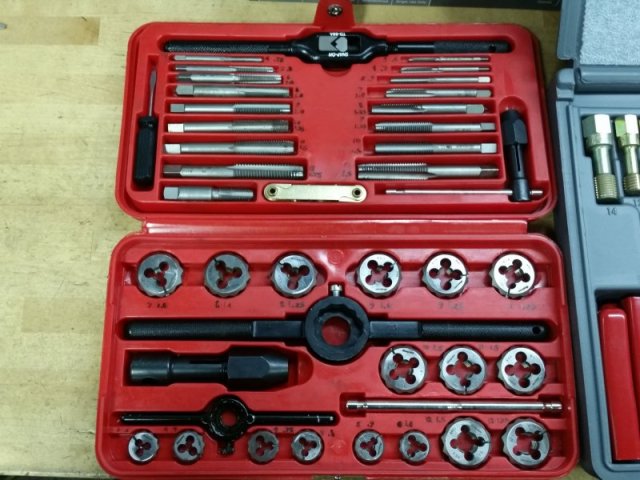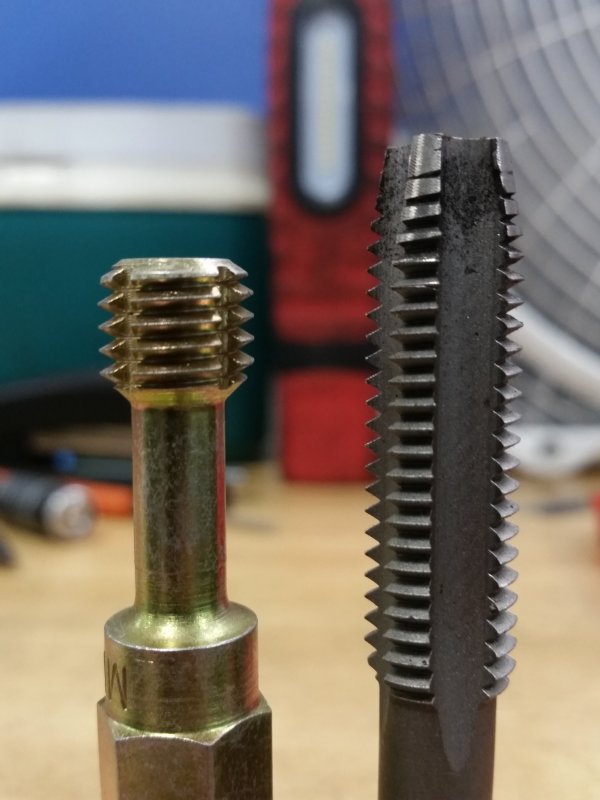When threads get damaged on bolts or in bolt holes, there are two options: taps & dies, or thread chasers. What are they, and what’s the difference between the two? Why do I have sets of each?

Taps, dies, and thread chasers are all tools that are designed to create or repair threads either in holes or on bolts and studs, and come in a variety of diameters and thread pitches. They look like nuts and bolts, but the hardness of the material they’re made of and the slots in the threads are what make them cut out material.

Taps and dies are designed for creating new threads. If you drill a hole in a piece of metal that you want to run a bolt into, you’d use a tap to cut threads in it. Similarly, if you have a round piece of metal you can use a die to cut thread onto it so a nut can go on it.

Thread chasers aren’t designed for cutting new threads, only for cleaning rusty or damaged threads. Taps can often be used instead of thread chasers, and it was what I mainly used my tap and die set for, but it’s not usually the best way. I recently got this thread chaser set, and was immediately using it, saving myself several headaches because of messed up threads on bolts I didn’t have the right size taps or dies for.

The difference in design is easy to see in this picture. The thread chaser is on the left, and you can see that the threads start at the very end, while on the tap on the right, the threads gradually emerge, letting it cut in steps rather than trying to take it all out at once. As long as the threads at the end on the hole or bolt you’re starting at are good, it’s best to use a thread chaser rather than a tap or die, because it’s less likely to get crooked or cross-threaded.

One time I recently ended up using a tap instead of a thread chaser for a job that was just cleaning threads. I was installing a trailer hitch on a car that a few years old, so the factory threaded bolt holes were rusty. I couldn’t get the bolts to thread in because of the rust, so I tried a thread chaser, but it also wouldn’t start. Unfortunately, it was a diameter and pitch that doesn’t come in most tap sets. Eventually I had to wait for one of the tool trucks to show up and buy the tap for that size, and it was able to get through the rust and clean up the threads enough to get the bolt in.
New blog posts every Monday and Thursday, plus pictures throughout the week on Facebook, Twitter, and Instagram!
Mechanical Malarkey T-shirts, hats, and stickers are available to order!
-Dan

Pingback: Top 10 Best Tap and Die Set (2019) Reviews & Buyer's Guide | Drillly
I recently heard my husband talking about thread chasers, and I want to know the difference between those and taps. It´s interesting to know that thread chasers aren’t designed for cutting new threads, only for cleaning rusty or damaged threads. If I ever need to buy any of these tools I will make sure I buy the right piece for what I need it.
LikeLike
Using a tap or die to repair threads is very likely to remove too much material, weakening the threads. You wouldn’t thinks so, but it does. Try both and see how much extra slop you end up with running a tap (play between the threads before you tighten the bolt). Use thread chasers if at all possible. A good penetrating oil helps.
LikeLike
Hi; Where can I buy a thread chaser that is 1 1/16 x 24 ? Any help would be appreciated. thecarguy12@cs.com
LikeLike